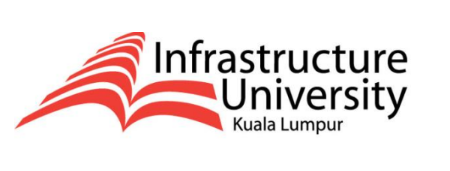Cash Waqf and The Development: A Case Study of Cash Waqf Linked Sukuk in Indonesia
DOI:
https://doi.org/10.21154/elbarka.v5i1.3713Keywords:
Cash Waqf Linked Sukuk, Social Impact Bond, Islamic Finance, Innovation, Sustainable Development GoalsAbstract
This study offers an integrated analysis of the Cash Waqf Linked Sukuk application in Indonesia. The method employed is a review of the literature utilizing many data sources. Several significant ideas, like the sharing economy, Islamic financial innovation, and social impact bonds, have a significant link with the implementation of CWLS, according to the findings. Cash Waqf Linked Sukuk (CWLS) is a tool for placing waqf money (cash waqf) on Indonesia's sovereign Sukuk (SBSN), which was developed to support the social facilities development program. With the presence of CWLS, the private sector can actively contribute to the government's development of public facilities for widespread advantages. The primary advantage of CWLS is that its advantages can be enhanced through the provision of government-managed public infrastructure with solid governance and a low degree of risk. The Indonesian Waqf Board, Bank Indonesia, the Ministry of Finance, Islamic Financial Institutions, the Zakat Institutions, the Ministry of Religious Affairs, Investors, and (Mauquf Alaih) Beneficiaries are involved in the management of CWLS. The study finds that CWLS may be able to aid the community in achieving more sustainable and equitable economic growth.
References
Al Arif, M. N. R. (2010). Pemberdayaan Masyarakat Berbasis Wakaf Uang. Jurnal Asy-Syir’ah, Fakulti Syariah UIN Sunan Kalijaga Yogyakarta, 44(2), 813”“828.
Aldeen, K. N., Ratih, I. S., & . Herianingrum, S. (2020). Contemporary issues on cash waqf: A review of the literature. International Journal of Islamic Economics and Finance (IJIEF), 3(2), 119-144. DOI: https://doi.org/10.18196/ijief.3236
Al”Salem, F. H. (2009). Islamic financial product innovation. International Journal of Islamic and Middle Eastern Finance and Management.
Aziz, M. R. A., Johari, F., & Yusof, M. A. (2013). Cash Waqf Models For Financing In Education. In The 5th Islamic Economic System Conference (IECONS2013), (September 2013), 835”“842.
Çizakça,Murat, (2004). Incorporated CashWaqfs and Mudaraba, Islamic Non-bank Financial
Instruments From the Past to the Future. (Turkey: Bahcesehir University)
Çizakça,Murat, (2010). Incorporated Cash Waqfs and Mudaraba, Islamic Non-bank Financial
Instruments from the Past to the Future, MPRA Paper <http://mpra.ub.unimuenchen.de/25336>.
Dabbous, A., & Tarhini, A. (2020). Does sharing economy promote sustainable economic development and energy efficiency? Evidence from OECD countries. Journal of Innovation & Knowledge.
De las Heras, A., Relinque-Medina, F., Zamora-Polo, F., & Luque-Sendra, A. (2020). Analysis of the evolution of the Sharing Economy towards sustainability. Trends and transformations of the concept. Journal of Cleaner Production, 125227.
Direktorat Jenderal Pengelolaan Pembiayaan dan Risiko Kementrian Keuangan Republik Indonesia (Directorate General of Financing and Risk Management, M. o. F. o. t. R. o. I. (2020). Peran Sukuk Negara sebagai Alternatif Sumber Pembiayaan dalam Pembangunan Nasional. Jakarta Direktorat Jenderal Pengelolaan Pembiayaan dan Risiko Kementrian Keuangan Republik Indonesia.
Direktorat Pembiayaan Syariah Direktorat Jenderal Pengelolaan Pembiayaan dan Resiko Kementrian Keuangan Republik Indonesia (Directorate of Sharia Financing, D. G. o. F. a. R. M., Ministry of Finance of the Republic of Indonesia). (2020). Cash Waqf Linked Sukuk Seri SWR001“Kebaikan Jariyah Penuh Berkah”. Jakarta Ministry of Finance of the Republic of Indonesia.
Faudji, R., & Paul, W. (2020). CASH WAQF LINKED SUKUK DALAM OPTIMALKAN PENGELOLAAN WAKAF BENDA BERGERAK (UANG). Jurnal Ilmiah MEA (Manajemen, Ekonomi, & Akuntansi), 4(2), 331-348.
Indonesia, B. (2020). Laporan Ekonomi dan Keuangan Syariah Tahun 2019. Jakarta: Bank Indonesia Retrieved from https://www.bi.go.id/id/publikasi/laporan/Documents/Laporan-Ekonomi-dan-Keuangan-Syariah-2019.pdf.
Ismail, C. Z., Muda, S., and Hanafiah, N. J. A. (2014). Challenges and Prospects of Cash Waqf Development in Malaysia. Journal of Basic and Applied Scientific Research, 4(2), 340”“348.
Khamis, S. R., and Salleh, M.C.M. (2018). Study on the efficiency of cash waqf management in Malaysia. Journal of Islamic Monetary Economics and Finance, 4 (1), 61-84.
Marwan, S., & Haneef, M. (2019). Does Doing Good Pay Off? Social Impact Bonds and Lessons for Islamic Finance to Serve the Real Economy. Islamic Economic Studies, 27(1).
Mohammad MTSH, (2008),Sustaining The Means of Sustainability: The Need For Accepting Wakaf (Waqf) Assets In Malaysian Property Market. A paper presented in The 14th Annual Conference of the Pacific Rim Real Estate Society, Kuala Lumpur, Malaysia.
Mohd Marzuki, M. U., Shahimi, S., Ismail, A. G., & Embong, Z. (2012). Tackling Poverty : A Look At Cash Waqf. In Prosiding Perkem Vii (Vol. 2, pp. 1611”“1623).
Muhammad, A. S., (1997). Risâlahfî Jawâz Waqf an-Nuqûd, tahqiq: Abû al-Asybâl Shaghîr Ahmad Syâghif al-Bâkistânî . Beirut: Dâr Ibn Hazm.
Nakamura, H., Abe, N., & Mizunoya, T. Factors inhibiting the use of sharing economy services in Japan. Journal of Cleaner Production, 278, 123981.
Zhu, X., & Liu, K. (2020). A systematic review and future directions of the sharing economy: business models, operational insights and environment-based utilities. Journal of Cleaner Production, 125209.
Downloads
Published
Issue
Section
License
Copyright (c) 2025 Eko Fajar Cahyono, Sutan Emir Hidayat

This work is licensed under a Creative Commons Attribution-NonCommercial 4.0 International License.
El-Barka: Journal of Islamic Economics and Business allow the author(s) to hold the copyright without restrictions and allow the author(s) to retain publishing rights without restrictions, also the owner of the commercial rights to the article is the author.





